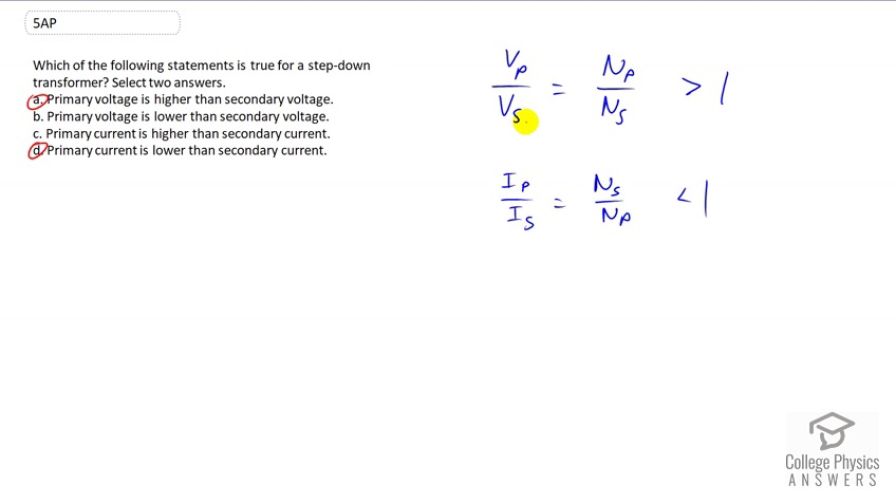Question
Which of the following statements is true for a step-down transformer? Select two answers.
- Primary voltage is higher than secondary voltage.
- Primary voltage is lower than secondary voltage.
- Primary current is higher than secondary current.
- Primary current is lower than secondary current.
Final Answer
(a) & (d)
Solution video
OpenStax College Physics for AP® Courses, Chapter 23, Problem 5 (Test Prep for AP® Courses)

vote with a rating of
votes with an average rating of
.
Video Transcript
This is College Physics Answers with Shaun Dychko. A step-down transformer has a higher voltage in the primary than it does in the secondary. So 'stepping down' means the secondary has the lower voltage. And step-down transformers is what you find on utility poles before the wire is going to the house. The utility poles have high voltage in order to have a reduced current in those utility wires, in order to minimize the power dissipated (or lost) because the power dissipated will be I squared times resistance of the lines. And by having a higher voltage, you're reducing the current. So, that means VP over VS is going to be greater than one, in which case the primary voltage is higher than the secondary voltage. Now, for the case of the current, the primary current divided by secondary current is going to be NS over NP, and we've already seen that NP over NS has to be more than one because this is the transformer formula for a voltage. And if VP over VS is greater than one, then that means NP over NS is greater than one, in which case NS over NP, being reciprocal of that, is going to be less than one. And so the primary current will be lower than the secondary current. So the answers are A and D.